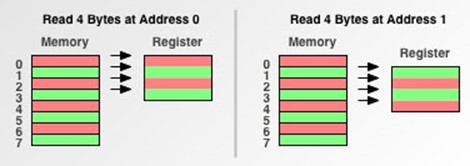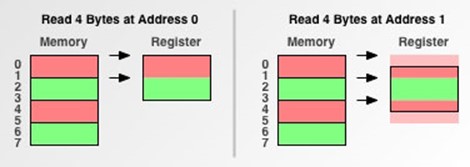转载:http://blog.csdn.net/leixiaohua1020/article/details/41176777
=====================================================
FFmpeg的库函数源代码分析文章列表:
【架构图】
【通用】
FFmpeg 源代码简单分析:av_register_all()
FFmpeg 源代码简单分析:avcodec_register_all()
FFmpeg 源代码简单分析:内存的分配和释放(av_malloc()、av_free()等)
FFmpeg 源代码简单分析:常见结构体的初始化和销毁(AVFormatContext,AVFrame等)
FFmpeg 源代码简单分析:av_find_decoder()和av_find_encoder()
FFmpeg 源代码简单分析:avcodec_open2()
FFmpeg 源代码简单分析:avcodec_close()
【解码】
图解FFMPEG打开媒体的函数avformat_open_input
FFmpeg 源代码简单分析:avformat_open_input()
FFmpeg 源代码简单分析:avformat_find_stream_info()
FFmpeg 源代码简单分析:av_read_frame()
FFmpeg 源代码简单分析:avcodec_decode_video2()
FFmpeg 源代码简单分析:avformat_close_input()
【编码】
FFmpeg 源代码简单分析:avformat_alloc_output_context2()
FFmpeg 源代码简单分析:avformat_write_header()
FFmpeg 源代码简单分析:avcodec_encode_video()
FFmpeg 源代码简单分析:av_write_frame()
FFmpeg 源代码简单分析:av_write_trailer()
【其它】
FFmpeg源代码简单分析:日志输出系统(av_log()等)
FFmpeg源代码简单分析:结构体成员管理系统-AVClass
FFmpeg源代码简单分析:结构体成员管理系统-AVOption
FFmpeg源代码简单分析:libswscale的sws_getContext()
FFmpeg源代码简单分析:libswscale的sws_scale()
FFmpeg源代码简单分析:libavdevice的avdevice_register_all()
FFmpeg源代码简单分析:libavdevice的gdigrab
【脚本】
【H.264】
=====================================================
mem.h (libavutil)
Mem.c (libavutil)
ES:malloc free size_t 内存对齐 大小端
本文简单记录一下FFmpeg中内存操作的函数。
内存操作的常见函数位于libavutil\mem.c中。本文记录FFmpeg开发中最常使用的几个函数:av_malloc(),av_realloc(),av_mallocz(),av_calloc(),av_free(),av_freep()。
av_malloc()是FFmpeg中最常见的内存分配函数。它的定义如下。
[cpp] view plain copy
-
#define FF_MEMORY_POISON 0x2a
-
-
#define ALIGN (HAVE_AVX ? 32 : 16)
-
-
static size_t max_alloc_size= INT_MAX;
-
-
void *av_malloc(size_t size)
-
{
-
void *ptr = NULL;
-
#if CONFIG_MEMALIGN_HACK
-
long diff;
-
#endif
-
-
-
/* let's disallow possibly ambiguous cases */
-
if (size > (max_alloc_size - 32))
-
return NULL;
-
-
-
#if CONFIG_MEMALIGN_HACK
-
ptr = malloc(size + ALIGN);
-
if (!ptr)
-
return ptr;
-
diff = ((~(long)ptr)&(ALIGN - 1)) + 1;
-
ptr = (char *)ptr + diff;
-
((char *)ptr)[-1] = diff;
-
#elif HAVE_POSIX_MEMALIGN
-
if (size) //OS X on SDK 10.6 has a broken posix_memalign implementation
-
if (posix_memalign(&ptr, ALIGN, size))
-
ptr = NULL;
-
#elif HAVE_ALIGNED_MALLOC
-
ptr = _aligned_malloc(size, ALIGN);
-
#elif HAVE_MEMALIGN
-
#ifndef __DJGPP__
-
ptr = memalign(ALIGN, size);
-
#else
-
ptr = memalign(size, ALIGN);
-
#endif
-
/* Why 64?
-
* Indeed, we should align it:
-
* on 4 for 386
-
* on 16 for 486
-
* on 32 for 586, PPro - K6-III
-
* on 64 for K7 (maybe for P3 too).
-
* Because L1 and L2 caches are aligned on those values.
-
* But I don't want to code such logic here!
-
*/
-
/* Why 32?
-
* For AVX ASM. SSE / NEON needs only 16.
-
* Why not larger? Because I did not see a difference in benchmarks ...
-
*/
-
/* benchmarks with P3
-
* memalign(64) + 1 3071, 3051, 3032
-
* memalign(64) + 2 3051, 3032, 3041
-
* memalign(64) + 4 2911, 2896, 2915
-
* memalign(64) + 8 2545, 2554, 2550
-
* memalign(64) + 16 2543, 2572, 2563
-
* memalign(64) + 32 2546, 2545, 2571
-
* memalign(64) + 64 2570, 2533, 2558
-
*
-
* BTW, malloc seems to do 8-byte alignment by default here.
-
*/
-
#else
-
ptr = malloc(size);
-
#endif
-
if(!ptr && !size) {
-
size = 1;
-
ptr= av_malloc(1);
-
}
-
#if CONFIG_MEMORY_POISONING
-
if (ptr)
-
memset(ptr, FF_MEMORY_POISON, size);
-
#endif
-
return ptr;
-
}
如果不考虑上述代码中的一大堆宏定义(即类似CONFIG_MEMALIGN_HACK这类的宏都采用默认值0),av_malloc()的代码可以简化成如下形式。
[cpp] view plain copy
-
void *av_malloc(size_t size)
-
{
-
void *ptr = NULL;
-
/* let's disallow possibly ambiguous cases */
-
if (size > (max_alloc_size - 32))
-
return NULL;
-
ptr = malloc(size);
-
if(!ptr && !size) {
-
size = 1;
-
ptr= av_malloc(1);
-
}
-
return ptr;
-
}
可以看出,此时的av_malloc()就是简单的封装了系统函数malloc(),并做了一些错误检查工作。
关于size_t
size _t 这个类型在FFmpeg中多次出现,简单解释一下其作用。size _t是为了增强程序的可移植性而定义的。不同系统上,定义size_t可能不一样。它实际上就是unsigned int。
FFmpeg内存分配方面多次涉及到"内存对齐"(memory alignment)的概念。
这方面内容在IBM的网站上有一篇文章,讲的挺通俗易懂的,在此简单转述一下。
程序员通常认为内存就是一个字节数组,每次可以一个一个字节存取内存。例如在C语言中使用char *指代"一块内存",Java中使用byte[]指代一块内存。如下所示。
但那实际上计算机处理器却不是这样认为的。处理器相对比较"懒惰",它会以2字节,4字节,8字节,16字节甚至32字节来存取内存。例如下图显示了以4字节为单位读写内存的处理器"看待"上述内存的方式。
上述的存取单位的大小称之为内存存取粒度。
下面看一个实例,分别从地址0,和地址1读取4个字节到寄存器。
从程序员的角度来看,读取方式如下图所示。
而2字节存取粒度的处理器的读取方式如下图所示。
可以看出2字节存取粒度的处理器从地址0读取4个字节一共读取2次;从地址1读取4个字节一共读取了3次。由于每次读取的开销是固定的,因此从地址1读取4字节的效率有所下降。
4字节存取粒度的处理器的读取方式如下图所示。
可以看出4字节存取粒度的处理器从地址0读取4个字节一共读取1次;从地址1读取4个字节一共读取了2次。从地址1读取的开销比从地址0读取多了一倍。由此可见内存不对齐对CPU的性能是有影响的。
av_realloc()用于对申请的内存的大小进行调整。它的定义如下。
[cpp] view plain copy
-
void *av_realloc(void *ptr, size_t size)
-
{
-
#if CONFIG_MEMALIGN_HACK
-
int diff;
-
#endif
-
-
-
/* let's disallow possibly ambiguous cases */
-
if (size > (max_alloc_size - 32))
-
return NULL;
-
-
-
#if CONFIG_MEMALIGN_HACK
-
//FIXME this isn't aligned correctly, though it probably isn't needed
-
if (!ptr)
-
return av_malloc(size);
-
diff = ((char *)ptr)[-1];
-
av_assert0(diff>0 && diff<=ALIGN);
-
ptr = realloc((char *)ptr - diff, size + diff);
-
if (ptr)
-
ptr = (char *)ptr + diff;
-
return ptr;
-
#elif HAVE_ALIGNED_MALLOC
-
return _aligned_realloc(ptr, size + !size, ALIGN);
-
#else
-
return realloc(ptr, size + !size);
-
#endif
-
}
默认情况下(CONFIG_MEMALIGN_HACK这些宏使用默认值0)的代码:
[cpp] view plain copy
-
void *av_realloc(void *ptr, size_t size)
-
{
-
/* let's disallow possibly ambiguous cases */
-
if (size > (max_alloc_size - 32))
-
return NULL;
-
return realloc(ptr, size + !size);
-
}
可以看出av_realloc()简单封装了系统的realloc()函数。
av_mallocz()可以理解为av_malloc()+zeromemory。代码如下。
[cpp] view plain copy
-
void *av_mallocz(size_t size)
-
{
-
void *ptr = av_malloc(size);
-
if (ptr)
-
memset(ptr, 0, size);
-
return ptr;
-
}
从源代码可以看出av_mallocz()中调用了av_malloc()之后,又调用memset()将分配的内存设置为0。
av_calloc()则是简单封装了av_mallocz(),定义如下所示。
[cpp] view plain copy
-
void *av_calloc(size_t nmemb, size_t size)
-
{
-
if (size <= 0 || nmemb >= INT_MAX / size)
-
return NULL;
-
return av_mallocz(nmemb * size);
-
}
从代码中可以看出,它调用av_mallocz()分配了nmemb*size个字节的内存。
av_free()用于释放申请的内存。它的定义如下。
[cpp] view plain copy
-
void av_free(void *ptr)
-
{
-
#if CONFIG_MEMALIGN_HACK
-
if (ptr) {
-
int v= ((char *)ptr)[-1];
-
av_assert0(v>0 && v<=ALIGN);
-
free((char *)ptr - v);
-
}
-
#elif HAVE_ALIGNED_MALLOC
-
_aligned_free(ptr);
-
#else
-
free(ptr);
-
#endif
-
}
默认情况下(CONFIG_MEMALIGN_HACK这些宏使用默认值0)的代码:
[cpp] view plain copy
-
void av_free(void *ptr)
-
{
-
free(ptr);
-
}
可以看出av_free()简单的封装了free()。
av_freep()简单封装了av_free()。并且在释放内存之后将目标指针设置为NULL。
[cpp] view plain copy
-
void av_freep(void *arg)
-
{
-
void **ptr = (void **)arg;
-
av_free(*ptr);
-
*ptr = NULL;
-
}




